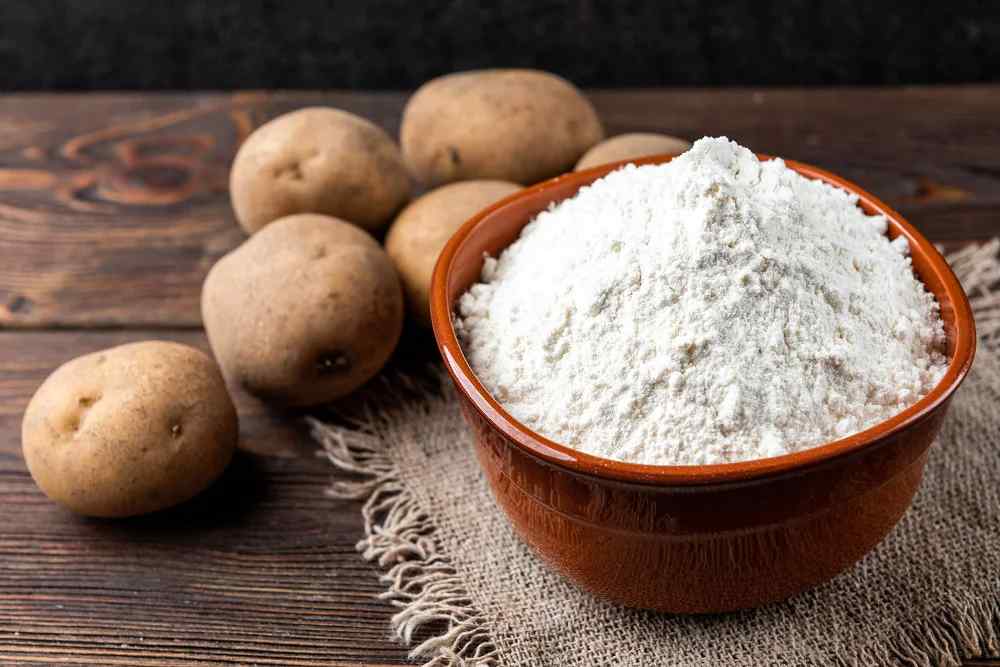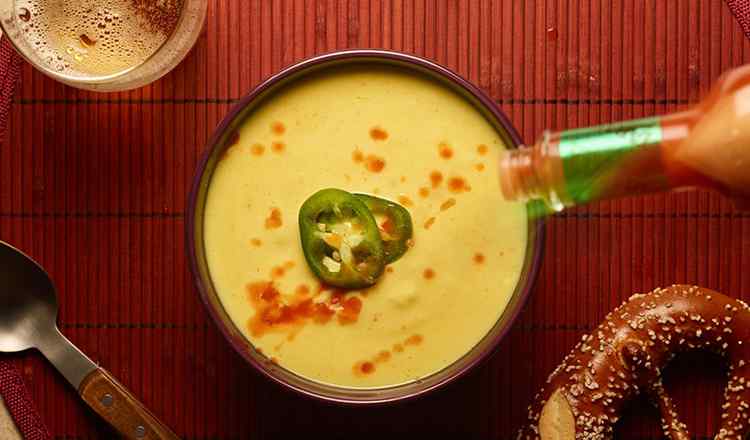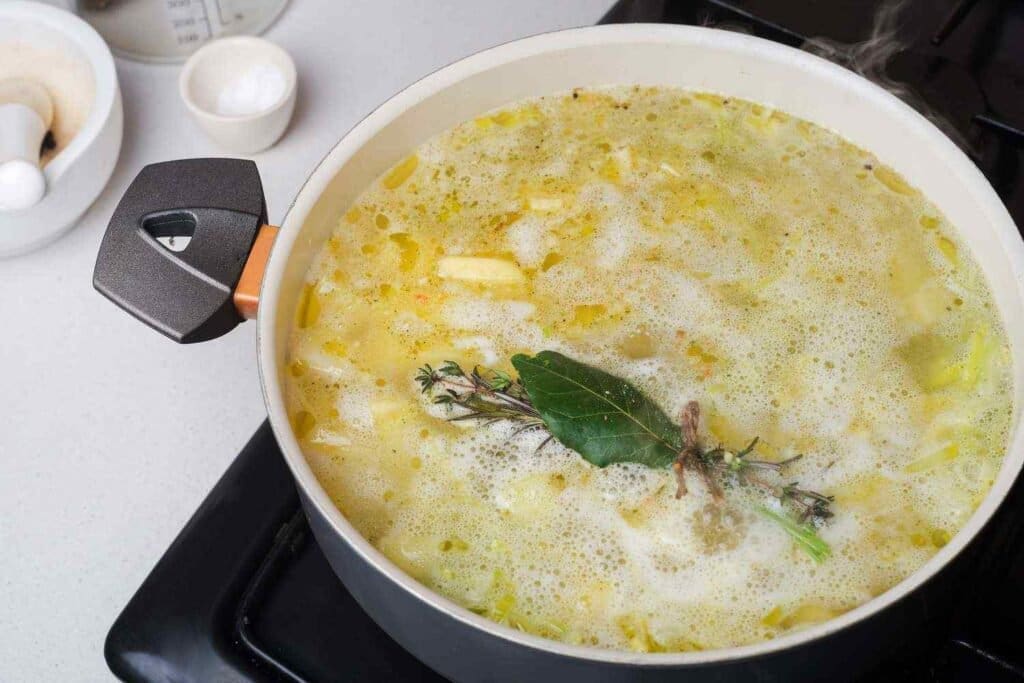Most people would freak out or become excessively confused when there is too much pepper in soup. There are actually some ways to deal with it, and they are quite effective in delivering a more balanced taste. But why does it matter?
If your soup is too peppery, try these easy fixes: dilute with more broth or water, add dairy like cream or yogurt, balance with acidity from lemon juice or vinegar, toss in a peeled potato to absorb excess spice, stir in some sweetness with sugar or honey, bulk it up with rice or noodles, or serve with a cooling garnish like sour cream or herbs.
You should be learning about these tricks when there is too much pepper in soup so you won’t be dealing with another waste-throwing action. Sure, it’s always easier to throw away the soup, but isn’t such a waste?
Not only it wastes your money, but also your time and efforts. Trust me, when you can pull these things just right, you will end up with plentiful, hearty, and tasty dish without having to waste even a drop.
1. Dilute with More Liquid

Dilution is considered the easiest solutions when it comes to too much pepper in soup. Liquid, especially water, will dilute anything – as long as it’s being added to your cooking.
However, you can also add broth, whose function is just the same as the water. For some people, broth is the tastier alternative because it will add a nice richness to the overall flavor of the soup.
On the other hand, water is also great for dilution, but let’s not forget that it may lack in flavor. But if your main purpose is to thin out the soup, so you can reduce the excessive heat, then water can also work well.
If you want to consider some flavored waster, try sparkling water, coconut water, and also flavored water. Be advised, though, that the original taste of the soup may be different once these flavored water has been added.
Here’s a handy tip in adding up the liquid. You need to do it slowly. Just add one tablespoon (of water) and see how it improves.
Of course, different dishes will need different amount. In general, soups or sauces may need several cups of extra liquid. Other types, like stir fry or gumbo, may need less than some cups. So, do it carefully and do it slowly.
2. Add a Starch

You should also consider about adding starchy foods that are commonly great when it comes to absorbing flavors. So, when you have too much pepper in soup, adding these starchy foods can really solve your issues.
For a starter, you can always have rice as it will absorb the extra heat, making your soup is more edible and more palatable-friendly. Any rice will do, including black, white, or brown rice.
Besides rice, you can also consider adding the noodles. They are also heavily absorbent, helping the soup to have a more balanced flavor.
Keep in mind, though, that not all noodles are the same. The very absorbent types are the rotini, linguine, and fettucine noodles. When compared to other noodles types, they are also thicker.
The next starchy foods include potatoes, sweet potatoes, and carrots. They are able to dilute the strong taste because they can add bulk to the food. Just like adding liquid, you should go slow with the starch. Add around a cup or two and stir.
Test out the flavor and let it sit for permanent settlement. When you think that you need to add more starch, then do it in a small amount. Just make sure that you have thoroughly stirred the dish before you test it out.
3. Add Dairy

It’s basically similar to adding liquid so the strong peppery taste can be thinned and balanced out. The fatty dairy stuff can help you balance the heat from the peppers.
Dairy products are also packed in protein, which helps with the flavor balancing. The fat itself can help to dissolve capsaicin found in the pepper. Any dairy products will do, such as yogurt, milk, ghee, sour cream, and even butter.
You should also know that cream (as well as milk) is considered a great neutralizer because they can balance not only too much pepper in soup, but also the broth heavy meals. It’s even great when you can mix in other dairy products, like heavy whipping cream, mozzarella, or cheddar cheese.
A word of advice is to add a small amount first and taste it. One and a half cup should be enough for your soup. But then again, always taste it after each addition.
Or you can also add a sour cream (a dollop of it should be enough) or add cheese sprinkle. Taste it whether you like the final result or not.
4. Add Acid

If you want to thin out the heat and peppery taste, consider adding acid. The most common options would include vinegar, lime juice, or lemon. The acid will somewhat helpful with the intense heat, reducing the flavor so it’s not very ‘peppery’.
Acidic liquid, like vinegar, would help minimize the intense heat regardless of whatever type you use. The most common options would include white vinegar, balsamic, and also apple cider vinegar.
Acidic liquid doesn’t only come from lemons or lime. You can also use oranges and even grapefruits that are rich in high level of acidic contents.
Try adding a tablespoon of the acid first, and add 2 tablespoons, max. Stir it up thoroughly and have a taste. You can add more if the heat is still too intense.
5. Add Sweetener

Do you know that sweet ingredients is also effective if you have too much pepper in soup? Most people would add up honey or sugar, which is believed to counteract the peppers’ heat. The natural sweetness is said to balance the flavor. A pinch (or even a tablespoon) of sugar should do it.
But if you have ketchup, maple syrup, brown sugar, or agave, you can also use them. Add just a pinch or a tablespoon first. Mix thoroughly and taste, so you can add more when needed.
6. Add Other Ingredients

Some ingredients can dilute the heat while adding extra texture or bulk to your soup, balancing out the flavor. This actually similar to adding starch to the soup.
You can consider nut butter, whose fat content is similar to the dairy products. Not only it’s creamy, but it’s thick, which can help to mask the excessive spiciness while adding some sweetness to the meal.
If you don’t have any nut butter, you can use cashew butter, almond butter, sunflower butter, and even peanut butter.
Oil also has this impressive absorbent trait, which can help with extra pepper. When you add oil, it will separate itself from the dish, carrying off the pepper with it. You can then skim the oil off to remove the pepper.
Use avocado, corn, coconut, peanut, or olive oil for it. Adding 2 to 3 tablespoons should be enough to remove the excess peppers.
7. Let It Simmer

Another possible solution is simple let it be for longer than needed. When you simmer it longer (than the usual), the peppery flavor would mellow out slowly.
In the end, you can have a better balance of the taste and not too much heat. It would be even greater when you can accompany it by adding liquid.
As you can see, some of these steps aren’t impossible to do. You can even combine some of them. So, the next time you have too much pepper in soup, you know the right thing to do.



